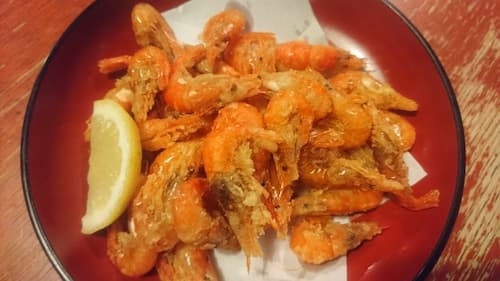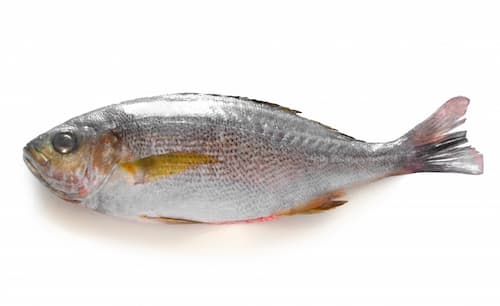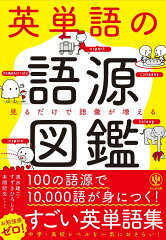※本記事には広告が表示されます。

エネルギーの英語表記
Energy
例文)
Carbohydrates are an important source of energy for our body.※炭水化物は私たちの体にとって重要なエネルギー源です。
“I need a cup of coffee to boost my energy in the morning.”※朝、エネルギーを高めるためにコーヒーが必要です。
栄養素の英語表記一覧表はコチラ→栄養素の英語表記一覧表
エネルギーの特徴
- エネルギーの多くは最終的に熱として身体から放出される
- 三大栄養素(タンパク質・脂質・炭水化物)がエネルギーの元になる
- タンパク質1gで4kcal
- 脂質1gで9kcal
- 炭水化物1gで4kcal
- 栄養学での単位はcal(カロリー)
- 国際機関での単位はjoule(ジュール)
- 「1000 cal=1 kcal」で「1 kcal=4.184 kj」
*1kcalは1㎏の水を14.5度~15.5度(1度)まで高めるために必要なエネルギー
- 「1000 cal=1 kcal」で「1 kcal=4.184 kj」
- エネルギーの摂取量と消費量が等しいとき、体重の変化はない
肥満者もやせの者も、体重、体組成に変化がなければ、摂取量と消費量は等しい
エネルギーの働き
このガイドでは、エネルギーが多い食品とその健康への利点を紹介します
エネルギーは、遊んだり、勉強したり、スポーツをするために必要な大切な力です。私たちの体を動かし、頭を良く働かせるために使われます。生きていく上でとっても重要です。
生命活動: 体を動かすため、そして心臓やお腹などの大事な臓器を動かすためにエネルギーが必要
活動量: 遊んだり、スポーツをしたりするときは、たくさんのエネルギーを使用する。だから、元気に活動するためには、しっかり食べてエネルギーを補給しよう!
バランス: 食べる量と運動する量のバランスが大切。食べすぎると体に蓄積されるので食べる量と活動量のバランスがとても大事
参考HP→厚生労働省「策定検討会報告書・エネルギー」
エネルギーの欠乏症
- 痩せすぎ→エネルギー不足は体重減少につながります。
- 疲れやすい→日常の活動で疲れを感じやすくなります。
- 筋肉量の低下→筋肉を維持するためのエネルギーが不足します。
- 肌や髪のトラブル→栄養不足は肌と髪の健康に影響します。
- 思考能力低下→エネルギーが不足すると集中力や記憶力に影響します。
- 運動能力低下→体の動きをサポートするエネルギーが不足します。
エネルギーが不足すると、私たちの体は正常に機能しなくなります。エネルギーは遊んだり、勉強したり、スポーツをするために必要な大切な力です。不足すると、体を動かすためや、大事な臓器を動かすためのエネルギーが足りなくなり、上記のような症状が現れます。活動量に応じて、エネルギーが多い食品を摂取することが、健康を維持するためには非常に重要です。
エネルギーの過剰症
- 肥満→体に必要以上のエネルギーが蓄積され、体重が増加します。
- 糖尿→体内の糖の管理がうまくいかなくなります。
- 動脈硬化→血管が硬くなり、血流が悪くなります。
- 高血圧→血圧が常に高い状態が続きます。
- 脂質異常症→血中の脂質バランスが崩れ、健康に悪影響を及ぼします。
これらの問題は、食事と運動のバランスが崩れることで起こりやすくなります。適切な量の食事をとり、定期的な運動をすることで、これらのリスクを減らすことができます。特に、「エネルギーが多い食品」の摂取は控えめにし、加工食品や高カロリーな食品の摂取を控え、野菜や果物など栄養価の高い食品を積極的に取り入れましょう。また、日常生活での活動量を増やし、体を動かす機会を作ることも大切です。
エネルギーが多い食品ランキング
エネルギーが多い野菜
エネルギーが多い魚介類
エネルギーが多い肉類
| 食材(肉類) | エネルギー |
|---|---|
| リブロース 脂身つき 焼き | 627 ㎉ |
| フォアグラ 茹で | 510 ㎉ |
| 豚バラ 脂身つき 焼き | 496 ㎉ |
| 牛ばら 脂身つき 焼き | 484 ㎉ |
| 豚ロース 脂身つき とんかつ | 450 ㎉ |
エネルギーが多い種実類
| 食材(種実類) | エネルギー |
|---|---|
| マカダミアナッツ 炒り | 720 ㎉ |
| ペカン フライ | 702 ㎉ |
| まつ 炒り | 690 ㎉ |
| ヘーゼルナッツ フライ | 684 ㎉ |
| くるみ 炒り | 674 ㎉ |
エネルギーが多い乳類
| 食材(乳類) | エネルギー |
|---|---|
| ナチュラルチーズ (パルメザン) | 475 ㎉ |
| ホイップクリーム (乳脂肪) | 430 ㎉ |
| ナチュラルチーズ (エメンタール) | 429 ㎉ |
| ナチュラルチーズ (チェダー) | 423 ㎉ |
| ホイップクリーム (乳脂肪、植物性脂肪) | 416 ㎉ |
エネルギーが多い油脂類
| 油脂類 | エネルギー |
|---|---|
| ラード | 941 ㎉ |
| 牛脂 | 940 ㎉ |
| とうもろこし油 | 921 ㎉ |
| ごま油 | 921 ㎉ |
| なたね油 | 921 ㎉ |
引用→「日本食品標準成分表2020年版(八訂)」
エネルギーの食事摂取基準 推定エネルギー必要量(㎉/日)
毎日のエネルギー摂取量は、あなたの活動レベルによって変わります。自分の生活スタイルに合ったレベルを選んで、必要なエネルギー量を知りましょう。
- 身体活動レベル1(エネルギーⅠ)
ほとんど座って過ごし、あまり体を動かさない人向け - 身体活動レベル2(エネルギーⅡ)
座る仕事が中心だけど、通勤や家事で少し体を動かす人向け - 身体活動レベル3(エネルギーⅢ)
立ち仕事やスポーツなど、活発に体を動かす人向け
| 年齢 | 男性 | 男性 | 男性 | 女性 | 女性 | 女性 |
|---|---|---|---|---|---|---|
| Ⅰ | Ⅱ | Ⅲ | Ⅰ | Ⅱ | Ⅲ | |
| 0-5 ヶ月 | ー | 550 | ー | ー | 500 | ー |
| 6-8 | ー | 650 | ー | ー | 600 | ー |
| 9-11 ヶ月 | ー | 700 | ー | ー | 650 | ー |
| 1-2 歳 | ー | 1000 | ー | ー | 900 | ー |
| 3-5 歳 | ー | 1300 | ー | ー | 1250 | ー |
| 6-7 歳 | 1350 | 1550 | 1700 | 1250 | 1450 | 1650 |
| 8-9 歳 | 1600 | 1800 | 2050 | 1500 | 1700 | 1900 |
| 10-11 歳 | 1950 | 2250 | 2500 | 1750 | 2000 | 2250 |
| 12-14 歳 | 2200 | 2500 | 2750 | 2000 | 2250 | 2550 |
| 15-17 歳 | 2450 | 2750 | 3100 | 2000 | 2250 | 2500 |
| 18-29 歳 | 2250 | 2650 | 3000 | 1700 | 1950 | 2550 |
| 30-49 歳 | 2300 | 2650 | 3050 | 1750 | 2000 | 2300 |
| 50-69 歳 | 2100 | 2450 | 2800 | 1650 | 1950 | 2200 |
| 70 歳以上 | 1850 | 2200 | 2500 | 1450 | 1700 | 2000 |
| 妊婦 (初期) | ー | ー | ー | +50 | +50 | +50 |
| 妊婦 (中期) | ー | ー | ー | +250 | +250 | +250 |
| 妊婦 (末期) | ー | ー | ー | +450 | +450 | +450 |
| 授乳婦 | ー | ー | ー | +350 | +350 | +350 |
引用→「Ⅱ 各論1.エネルギー・栄養素」
エネルギーについてまとめ
エネルギーは、私たちが生きるために欠かせない栄養素です。健康を維持するには、エネルギーだけでなく、他の栄養素もバランス良く取ることが重要です。私たちの体は摂取したエネルギーを使って活動し、余ったエネルギーは最終的に熱として放出されます。
エネルギーの必要量は、性別や体の大きさ、どれだけ動くかによって変わります。食べる量と運動で消費する量が同じなら、体重は変わりません。特に、「エネルギーが多い食品」を適切に選び、摂取することが、活力ある日々を送るための鍵となります。**自分に合ったエネルギー摂取量を知るには、年齢別の食事摂取基準をチェックしてみましょう。
関連記事
- 2020年版 年齢別 日本人の食事摂取基準表
- 35種類の栄養素 一覧表
- 【栄養素】タンパク質(Protein)
- 【栄養素】脂質(Lipid)
- 【栄養素】飽和脂肪酸(Saturated fatty acids)
- 【栄養素】n-6系脂肪酸(n-6 fatty acid)
- 【栄養素】コレステロール(Cholesterol)
- 【栄養素】炭水化物 (Carbohydrate)
- 【栄養素】食物繊維(Dietary fiber)





